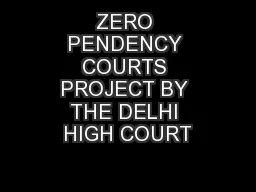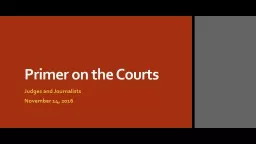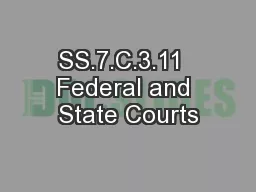PPT-ZERO PENDENCY COURTS PROJECT BY THE DELHI HIGH COURT
Author : eartala | Published Date : 2020-06-17
SUMMARY OF FINDINGS MAY 2019 OBJECTIVES OF THE PROJECT BRIEF BACKGROUND The project started in January 2017 in subordinate courts in Delhi 11 pilot courts with
Presentation Embed Code
Download Presentation
Download Presentation The PPT/PDF document "ZERO PENDENCY COURTS PROJECT BY THE DELH..." is the property of its rightful owner. Permission is granted to download and print the materials on this website for personal, non-commercial use only, and to display it on your personal computer provided you do not modify the materials and that you retain all copyright notices contained in the materials. By downloading content from our website, you accept the terms of this agreement.
ZERO PENDENCY COURTS PROJECT BY THE DELHI HIGH COURT: Transcript
Download Rules Of Document
"ZERO PENDENCY COURTS PROJECT BY THE DELHI HIGH COURT"The content belongs to its owner. You may download and print it for personal use, without modification, and keep all copyright notices. By downloading, you agree to these terms.
Related Documents














